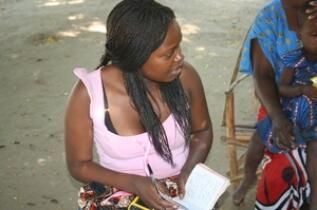
Supporting communities with health promotion campaigns could help mothers and other caregivers to seek health care for their children, ensuring that they receive prompt, appropriate treatment, according to new research published in PLOS ONE.
Educating key community members such as drug shop vendors, traditional healers and grandmothers about the different causes of childhood fever could improve treatment of sick children in Malawi.
The National Malaria Control Programme in Malawi is planning training of health workers in remote villages in the country on how to diagnose and treat malaria and recognise other illnesses that cause fever. Researchers from the ACT Consortium based in the Malawi-Liverpool-Wellcome Trust programme suggested that the training will help address current delays at the stage of seeking health care.
Access to artemisinin-based combination treatment (ACT) - the most effective treatment for malaria - in remote areas could considerably shorten the time to receive appropriate treatment.
Understanding the causes of fever
Mothers and other caregivers from a rural area in Malawi with low literacy levels and a high level of poverty, seek help depending on what they believe is causing their children’s fever. Seeking treatment follows a three-step approach: analysing symptoms and managing the illness at home, leaving the house to look for treatment, and finally assessing whether treatments work.
As part of the ACT Consortium’s ACTia trial, the research team analysed this approach, using focus group discussions and interviews with community members, to better understand how they assessed the children’s symptoms.
Dr Victoria Ewing, from the Liverpool School of Tropical Medicine and lead author of the study, said: “It is clear that perceptions and beliefs held by caregivers impact the way they look for treatment for their children. Health education messages need to be strengthened to ensure caregivers are aware of the importance of diagnosing the illness and treating it appropriately. Health professionals should give clear instructions, both verbally and pictorially, at the time of dispensing the medication.”
Participants described fever as “hot body” which could be caused by malungo, or malaria, but also other causes such as the weather, hunger and excessive crying. The symptoms that they described for malaria overlapped with other local illnesses.
Participants were aware of other illnesses that cause fever or convulsions, and named examples such as tetanus and epilepsy, while all participants interpreted ‘collapsing’ as a sign of severe malaria.
The study found that it may take up to five days to seek health care for an illness causing fever. When the child was unable to eat or play, these were reported as signs that a hospital visit was necessary and where “It won’t help to buy drugs from a shop,” one participant explained.
Other factors included which household members had the authority to make decisions about finding the correct treatment and the distance from health facilities. The costs and time required for different options to seek treatment were also important influences. These factors led participants to ‘buy time’ by using paracetamol from drug shops to control the fever at home in the first instance.
Choosing from different sources of treatment
When a fever was perceived to be malungo (malaria), mothers mainly sought care at public health facilities and community health workers. If symptoms worsened, they would go back to the hospital before trying a private facility, mainly because it was free and they could show that they did all they could.
If the hospital provided ACTs in such cases and this still did not cure the child, then the families considered other causes such as witchcraft – an idea sometimes encouraged by biomedical staff at hospitals, according to participants.
Generally caregivers prioritised hospitals and seemed encouraged by the presence of rapid diagnostic tests (RDTs): “It is important to rush to the hospital before going to the traditional healer, because the traditional healer may tell lies since he doesn’t have any machine for diagnosis,” one participant said.
Traditional healers were mainly used in the first instance in cases where, for example, the child had a fever while the mother also experienced specific symptoms such as itching, or when a local taboo was broken by the child’s family members.
Further information
- Read "Understanding Interpretations of and Responses to Childhood Fever in the Chikhwawa District of Malawi" in PLOS ONE.